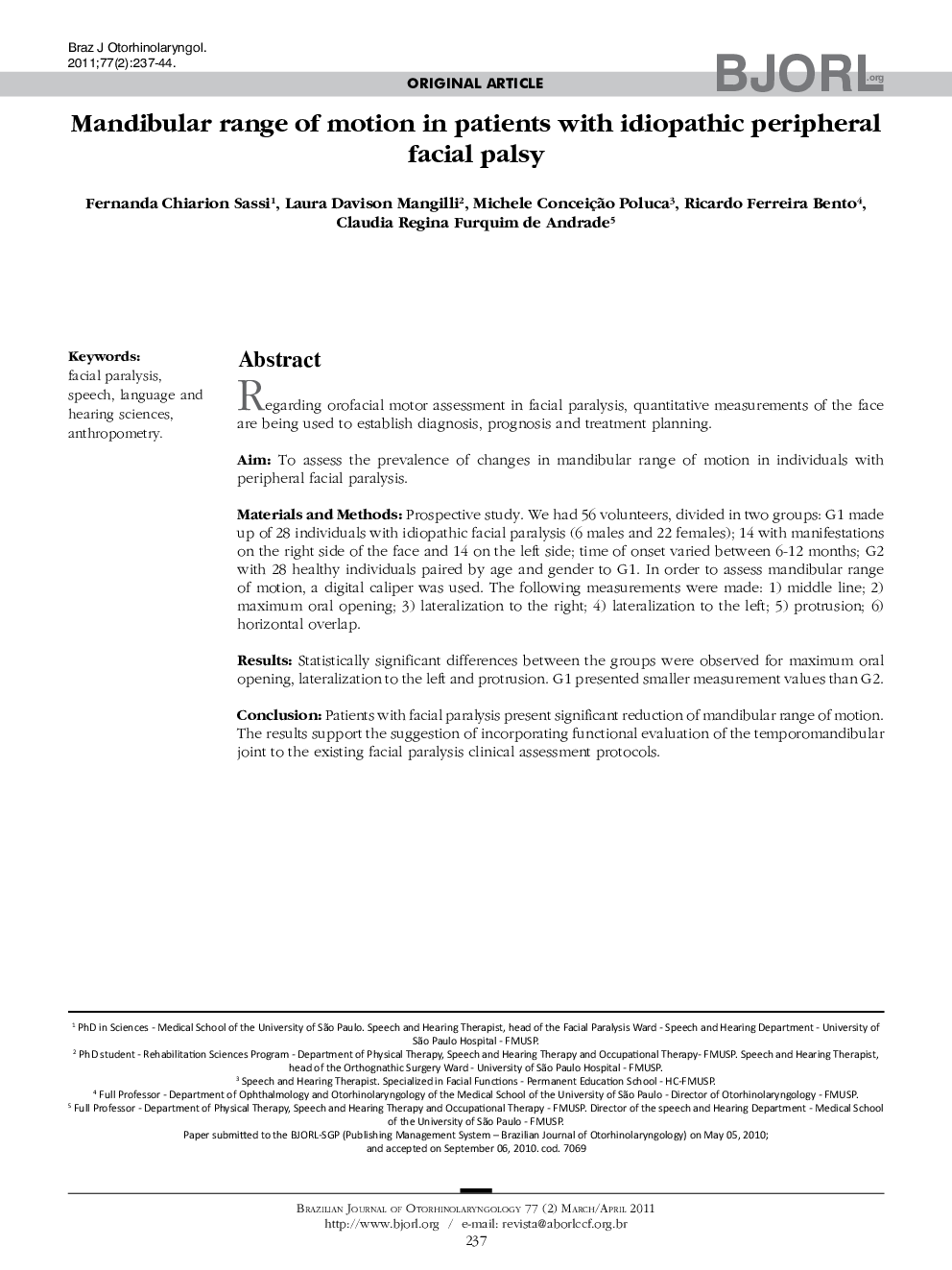| Article ID | Journal | Published Year | Pages | File Type |
|---|---|---|---|---|
| 4107468 | Brazilian Journal of Otorhinolaryngology | 2011 | 8 Pages |
Regarding orofacial motor assessment in facial paralysis, quantitative measurements of the face are being used to establish diagnosis, prognosis and treatment planning.AimTo assess the prevalence of changes in mandibular range of motion in individuals with peripheral facial paralysis.Materials and MethodsProspective study. We had 56 volunteers, divided in two groups: G1 made up of 28 individuals with idiopathic facial paralysis (6 males and 22 females); 14 with manifestations on the right side of the face and 14 on the left side; time of onset varied between 6-12 months; G2 with 28 healthy individuals paired by age and gender to G1. In order to assess mandibular range of motion, a digital caliper was used. The following measurements were made: 1) middle line; 2) maximum oral opening; 3) lateralization to the right; 4) lateralization to the left; 5) protrusion; 6) horizontal overlap.ResultsStatistically significant differences between the groups were observed for maximum oral opening, lateralization to the left and protrusion. G1 presented smaller measurement values than G2.ConclusionPatients with facial paralysis present significant reduction of mandibular range of motion. The results support the suggestion of incorporating functional evaluation of the temporomandibular joint to the existing facial paralysis clinical assessment protocols.
